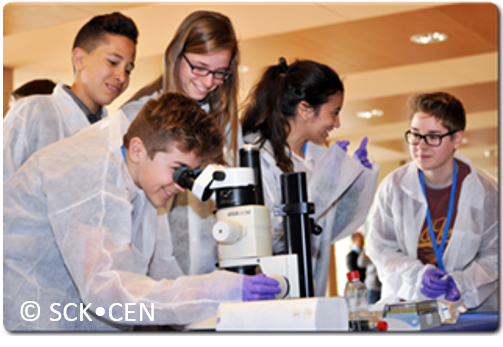Qualitative Insights into the Transport Properties of Molecular Electronic Devices: A Quantum Chemical Approach

Category
Ph D Defense
Date
2018-05-30 17:00
Venue
Vrije Universiteit Brussel, Brussels Humanities, Sciences & Engineering Campus, promotiezaal D2.01 - Pleinlaan 2, 1050 Elsene
Brussel, België
Brussel, België
Promovendus/a: Thijs Stuyver
Promotor(en): Prof. dr. em. Paul Geerlings, Prof. dr. Frank De Proft, Dr. Stijn Fias
Single-molecule electronics, the study of the electrical transport through single molecules connected in a circuit, can be considered as the ultimate step in the down-sizing of electronic components and thus carries great technological potential. However, chemical understanding of the transport properties of molecules is still ratherlimited. This provides an impetus for theoretical and experimental chemists alike to investigate the phenomena associated with electric transport through molecules and the influence of the structure of these molecules on them.
Starting from the so-called Source-and-Sink Potential model at Hückel level of theory, an expression for the transmission probability of
electrons through a molecule was obtained and cast in a graphtheoretical form. Clear structure-property relationships for the electric transport through molecules were obtained and connected to chemical concepts. With the help of the derived structure-property relationships, the occurrence of quantum interference – leading to an extremely low current when a small voltage is applied – could be predicted based on the structure of the molecule. Additionally, several guiding principles
were formulated for tuning the conductivity of molecules, either through geometrical changes, through changes in the aromaticity patterns or through substitution.
With all of these tools at hand, a wide range of applications were considered throughout this thesis. We explored the switching properties of a number of light-, redox- and heat sensitive molecules, among which expanded porphyrins. Additionally, we investigated a wide range of molecular wires and all the different ways to make them more/less conducting. Furthermore, the paths the current takes through conjugated molecules has also been studied and a strategy was devised to "seal off" part of the molecule for this current. Finally, we contributed to the further development of the Source-and-Sink Potential formalism, by developing a computer code capable of visualizing the path the current takes through the molecule in real space at higher levels of theory (Hartree-Fock and Density Functional Theory).
Our results will hopefully guide experimentalists in their quest for the design of optimal functional electronic components at the single- molecule-level.
All Dates
- 2018-05-30 17:00
Powered by iCagenda






